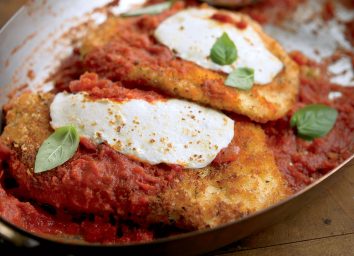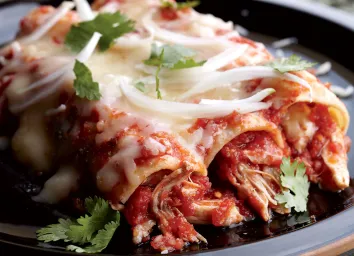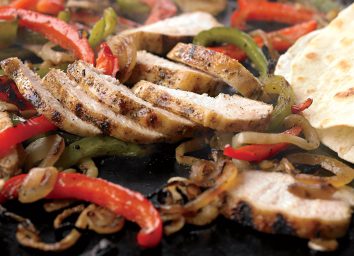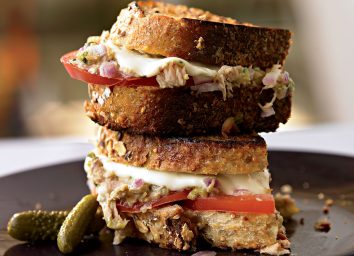A Flavorful, Low-Calorie Chicken Cacciatore Recipe
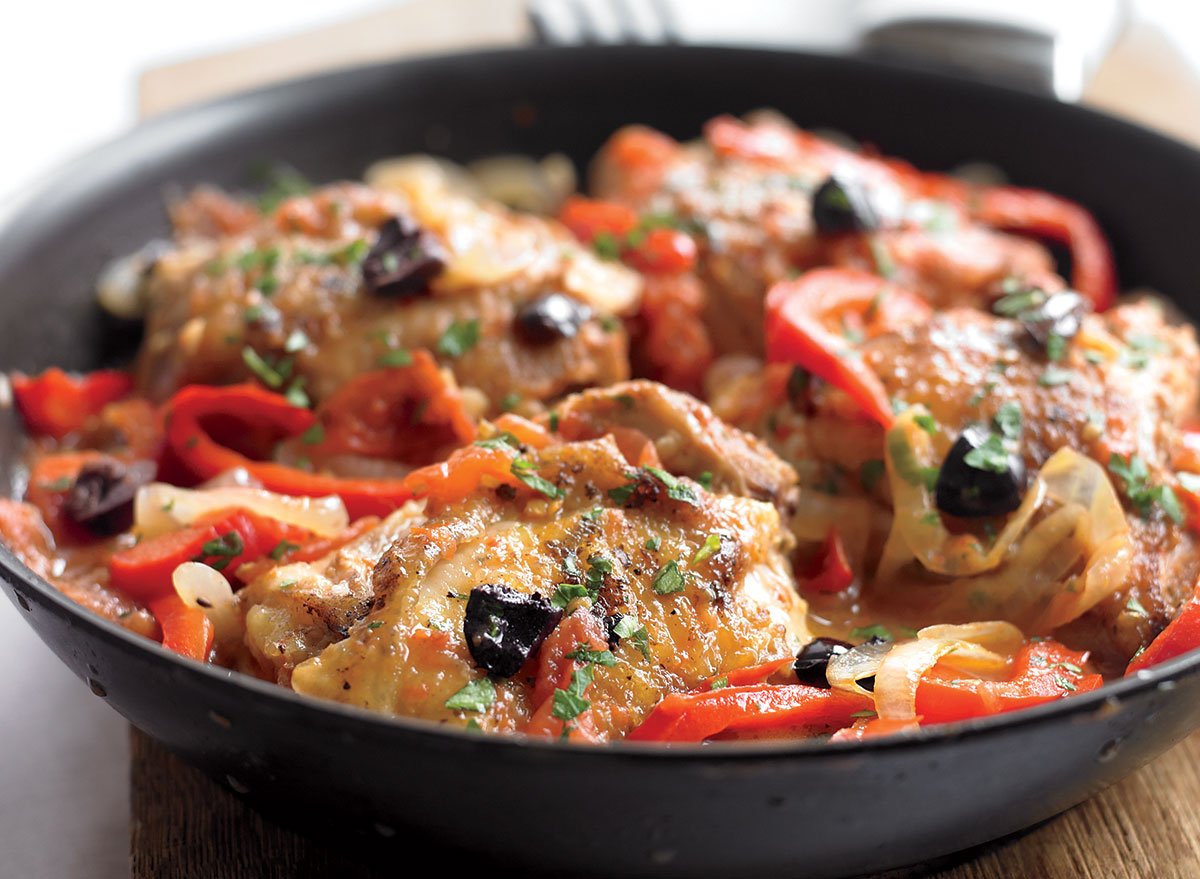
In the pantheon of classic Italian-American dishes, chicken cacciatore emerges at the top of the nutritional totem pole. That's because it derives its flavor from a lusty stew of tomatoes, peppers, onions, and wine—not a blanket of cheese or oil-soaked bread crumbs. That's right, you'll save almost 600 calories with our chicken cacciatore recipe and almost 10 bucks than you would dining on Olive Garden's Chicken Scampi.
Nutrition: 430 calories, 13 g fat (2 g saturated), 560 mg sodium
Serves 4
You'll Need
2 Tbsp olive oil
8 boneless chicken thighs (or a mix of thighs and drumsticks)
Salt and black pepper to taste
1 medium onion, thinly sliced
1 red bell pepper, thinly sliced
10–12 green or black olives, pitted and roughly chopped
4 cloves garlic, minced
1 tsp red pepper flakes
1⁄2 cup dry red wine
11⁄2 cups chicken broth
1 lb Italian tomatoes, coarsely chopped
2 Tbsp chopped flat-leaf parsley
How to Make It
- Heat the oil in a large cast-iron skillet or sauté pan over high heat. Season the chicken with salt and pepper and add to the skillet, skin side down. Cook 8 to 10 minutes, until lightly browned and crisp on all sides. Transfer to a plate.
- Lower the heat and add the onion, bell pepper, olives, garlic, and pepper flakes. Cook until the vegetables have softened, about 10 minutes.
- Pour in the wine and simmer, stirring occasionally, until it's nearly evaporated, about 5 minutes.
- Add the broth and tomatoes to the skillet.
- Return the chicken to the pan, tucking it into the vegetables skin side up, and bring to a simmer.
- Cook over medium heat for another 20 minutes, until the chicken is extremely tender and the sauce is reduced by half.
- Sprinkle with the parsley. Serve on soft polenta, quinoa, or a small bed of mashed potatoes.
Eat This Tip
Choosing Chicken
While boneless, skinless chicken is the leanest protein in the meat case, we leave the skin on here because it helps prevent the chicken from drying out during the cooking process. That doesn't mean you have to eat it, though. Leave the skin on while the chicken simmers to insulate and baste the meat, then simply pull it off before eating. The result? The moistest chicken imaginable for a light caloric toll.
This recipe (and hundreds more!) came from one of our Cook This, Not That! books. For more easy cooking ideas, you can also buy the book!
